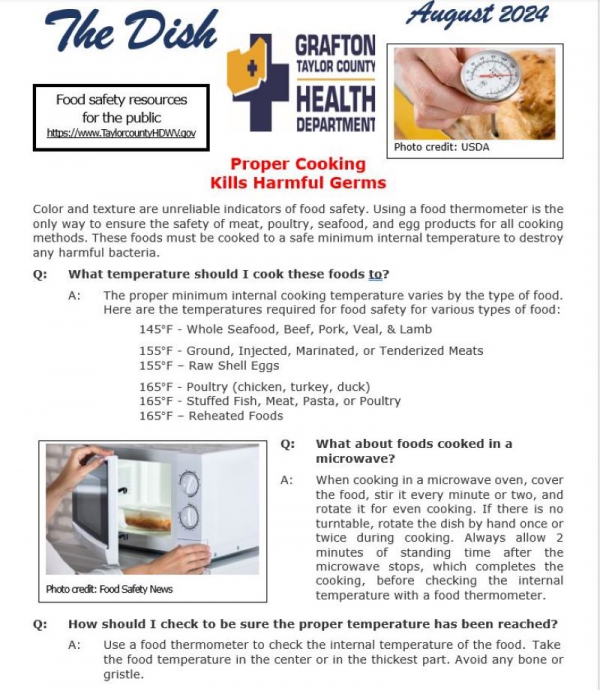Subscribe to Stay Informed
Environmental Health Newsletter
Posted 02/26/24
Q: How should I check to be sure the proper temperature has been reached?
A: Use a food thermometer to check the internal temperature of the food. Take the food temperature in the center or in the thickest part. Avoid any bone or gristle.
Correctly placing the food thermometer within food is important to get the most accurate temperature reading. Without proper placement, it’s possible that parts of your food could still be undercooked and, if contaminated, could make you sick.
Recently, USDA conducted a study to observe consumers preparing raw breakfast sausage in a test kitchen. In this study, 50% of participants used a food thermometer to take the internal temperature of the sausage patty, but 92% of them did not place it in the correct spot. The participants placed the thermometer into the top of the patty, which didn’t allow the thermometer to go into the food to accurately measure the temperature in the center.
Q: How should I take the temperature of thin foods like a hamburger or sausage patty?
A: Place the thermometer into the thin side of the food until it reaches the center. It is safest to take the food off the heat source and hold it with tongs or another utensil before taking the temperature. Ground beef, pork, and lamb should be cooked to 155°F.
Q: What about eggs?
A: Cook eggs until both the egg yolk and egg white are completely firm. If you like over easy or soft-cooked eggs, it is recommended that you use eggs that have been pasteurized in their shell to avoid the risk of Salmonella. These are available in most larger grocery stores.
The risk of foodborne illness increases when consumers fail to use a thermometer when cooking meat, poultry, eggs, or seafood. USDA researchers found that only an estimated 13.7% of at-home meal preparers used a food thermometer when preparing meals with meat, poultry, or seafood.
Analog food thermometers like the one pictured at right are widely available for less than $10. Digital thermocouple food thermometers with faster response times are available from Amazon and similar vendors for less than $30.
